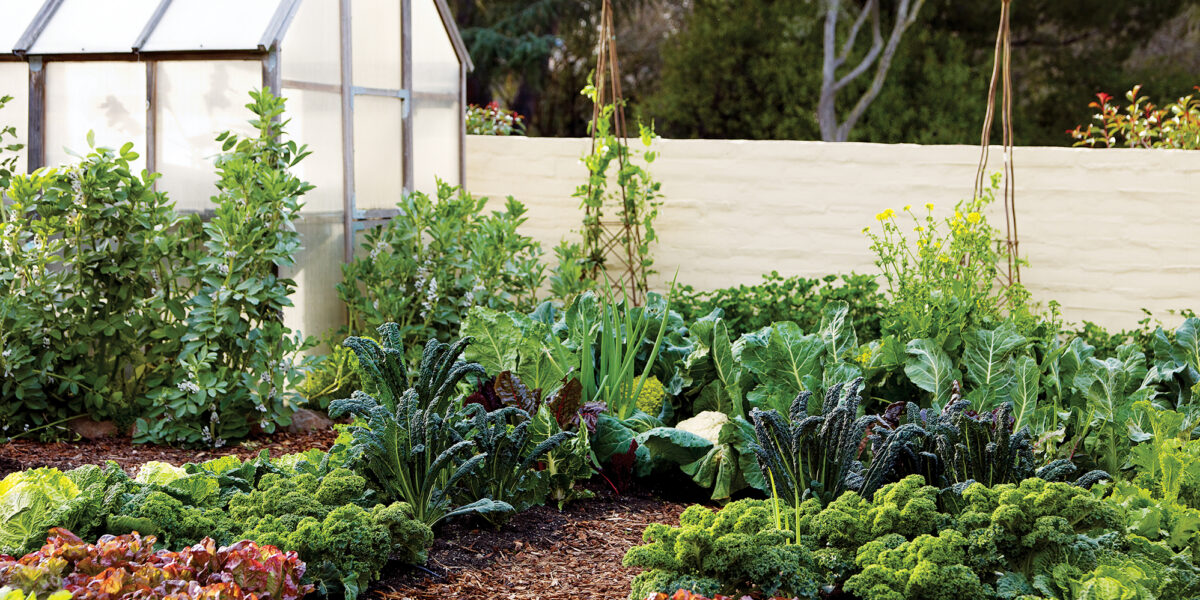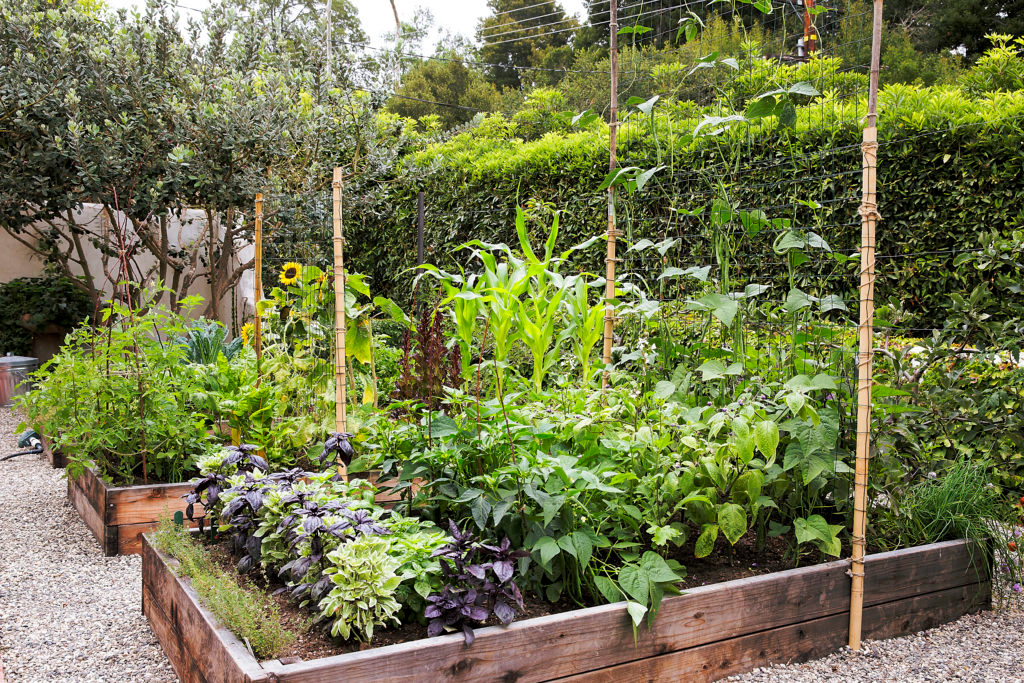
The Ultimate Guide to Vertical Vegetable Gardening
Patio pots and small plots rejoice, there’s always room to grow when going up.

Thomas J. Story
Ever wish you had more room to grow? We’ve got a secret to instantly increase your square footage, and we’re growing up, my friends. No matter if you’re planting an expansive backyard plot or just have room for a few clusters of balcony pots, vertical vegetable gardening is the easiest way to maximize your growing while also being a space saver, and increasing yields—not to mention it brings some interesting aesthetic appeal to your outdoor space. The perfect solution for every garden? We think so. Read on for our ultimate guide to vertical vegetable gardens and start thinking up!

Thomas J. Story
How to Plan Your Pots and Plots for a Vertical Garden
Before speeding to the nursery for plants, assess your space while getting realistic with your available time. Just because you have the space, doesn’t mean you want to overcommit, and when beginning any garden journey, it’s best to start small with a few easy-to-grow plants to get the hang of vertical gardening before expanding your setup.
Keep in mind that most vegetables need a minimum of six hours of sunlight to thrive—shady areas might not be setting you up for success, so stick to pots filled with lower light requirements such as greens and root vegetables. For those growing on patios and balconies, space, sunlight, and climate considerations all still factor in. South-facing walls provide the most sunlight, which is ideal for most vegetable plants, but do be aware of any reflective light or surface heat that might be too strong for your growing plants.
Try These Edible Plants Perfect for Trellising
Tomatoes, cucumbers, peas, and beans probably are the first plants that come to mind when you think about growing vertically, but there are actually a lot more you can play with given the right support structures. Many summer and winter squashes in addition to smaller melons, cucumbers, and even passionfruit and grapes are all fair game for your upwards garden additions. One of the many bonuses of vertical gardening is companion planting within the same containers. Tuck shallow rooted greens, alliums, herbs, and pollinators into your containers to maximize your growing surface.

Thomas J. Story
How to Choose a Trellis for Your Vegetable Garden
With so many customizable trellises on the market, it’s best to invest in quality materials that will last for years. Collapsible and easy-to-store metal styles with a slight angle are great for heavier crops such as squash and melon, which also provide shade for tender greens during the summer months. Trying to maximize in a smaller space? Tall screen panels might be your best bet, as they offer a clean, minimal look and are our preferred choice when growing tomatoes. A-frame and teepee structures are also a great choice for cucumbers, peas, and beans, and are a stunning garden accent both in-ground or placed in a half wine barrel.

Courtesy of Amazon

Courtesy of Amazon
Airflow is key, not just to eliminate potential disease, but also to maximize your yield, so position your growing area with access from all sides so you can manage and secure new growth. More of a DIY-er? The sky’s the limit, literally, when you can customize to your own needs—using natural materials like bamboo or recycled wood make for a more eco-friendly and attractive garden. However, it’s important to be realistic with your climate and choose materials that will stand the test of time and elements by opting for more sturdy, weather-resistant materials that will not only hold the weight of vining vegetables but also be less prone to rot.

Thomas J. Story
How to Choose a Container for Your Vertical Garden
Any food-safe vessel will get the job done, but it’s important to make sure your trellis supports have enough soil depth to keep them secure, so consider containers that are at least 2-3 feet deep and can hold plant weight without tipping over. While we love a cluster of terracotta pots, water evaporates quickly and these might need more watering than other ceramic containers or raised beds. No matter what you choose, ensure containers have adequate drainage holes to prevent waterlogging and root rot and make sure to elevate all containers off patio floors and grab a set of terracotta pot feet as a stylish and sensible choice to eliminate surface damage.

Courtesy of Amazon

Courtesy of Vego Garden
Another great space-saving solution is either modular systems, or small raised beds on wheels that can be moved or expanded as your garden grows, because let’s be real—you might not have as much to tend to in the winter months as you do come summer, and the option to move and change with your needs is what gardening is all about. Have absolutely no space? Don’t forget that hanging pots are also a form of vertical gardening! Fill baskets with herbs and strawberries for a pop of green around the exterior of your home.

Thomas J. Story
Vertical Garden Maintenance Tips
Once your plants are growing and climbing, ongoing care should be pretty minor. If using drip irrigation, make sure to set up your system before too much growth and adjust any micro sprays so lower plant leaves and stalks are not getting wet. The most important part of vertical gardening is lending a helping hand when needed. Reusable garden clips help secure and train wild vines, while occasional pruning can help increase airflow while eliminating dampness and diseases. Throughout the season, inspect trellises and clips for damage or adjustments and repair as needed. Keep in mind that the taller your plants grow, the more sunlight they’ll get, so adding row cover cloths can come in handy on those extremely hot summer days.

Courtesy of Amazon
Most importantly, go into your vertical garden journey with an open mind and the fearlessness to break some rules. Every garden plot and patio is unique and adjustments will have to be made. Lean into this new growth for not only your plants, but also for yourself!
We only recommend things we love. If you buy something through our site, we might earn a commission.
